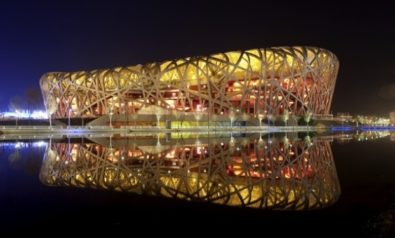Interviewee: Harsh V. Pant, Reader in International Relations at King’s College London
Interviewer: Benoît Wolff for Fair Observer
BW: How has India perceived the rapid economic development of China from the early 1970s onwards?
HP: The Indian response to China’s rapid economic development is a mix of awe and jealousy, though a greater confidence in India’s ability to take on China economically is gradually emerging. Many in India either envy China or try to dismiss its economic growth as a façade. As far as India is concerned, its political establishment still is unsure whether it should base its economic policies on sound economic principles or give in to a vocally powerful lunatic fringe that has no idea as to what economics is all about. This is as much due to the democratic institutional structure of the Indian polity as to a certain lack of will in the top Indian political leadership. More recently, Indian elites have been talking of China’s economic development as a source of inspiration.
BW: Is China really as assertive as the West claims, or is there latent Chinese fear that, for example, Japan or India might gain the upper hand?
HP: There is a genuine fear in China that the US partnerships with states on China’s periphery such as Japan, India, Indonesia and Vietnam are basically a policy of containment. The US-Japan relationship has always been problematic for China but India’s entry has further complicated the geopolitical equations for Beijing. For a long time, India was not really on the foreign policy radar of Chinese policymakers. But with a more outward-oriented foreign policy in recent years by New Delhi and America’s attempt to carve a ‘strategic partnership’ with India, China’s attitudes vis-à-vis India have also undergone a change in so far as India’s rise is viewed in Beijing as problematic for China’s own aspirations to emerge as a regional hegemon.
BW: In 2009, a group of Chinese populists wrote the book Unhappy China. Wealth and frustration over corrupt elites go hand in hand. Is a moody superpower a particularly difficult rival for India?
HP: Moody partners are always difficult to manage and China’s mood swings towards India have been particularly challenging for New Delhi. Since the early 1990s to almost three years back, there was a certain predictability in Chinese behavior. Border tensions, though not nearing resolution, at least seemed under control. Rhetoric from Beijing was moderate. Its policy on Kashmir seemed to be evolving in India’s favor. But recent years have witnessed a rapid deterioration on all fronts, with the trust deficit widening and rhetoric from both sides degenerating to an unprecedented degree. Discussions of a possible Chinese attack on India have become commonplace in the Indian strategic community and there has been a rise in negative views being expressed about India from Chinese think tanks and media.
BW: China’s military might is growing, and Japan and Taiwan are feeling threatened strategically. Is India concerned about this development?
HP: The rapidity of China’s military modernization has taken India by surprise. Part of it is related to India’s own defense modernization that has not progressed as planned, thereby increasing the capability gap between India and China. And part of it is related to China’s lack of transparency in defense spending. It is clear that the process of China’s military modernization is going much faster than many had anticipated. The increasing assertiveness of the Chinese military and changing balance of power in the nation’s civil-military relations should be a real cause of concern for China’s neighbors, including India.
BW: China’s investments in Pakistan since 2007 have been considerable. What particular interests does China have in the Muslim world?
HP: China’s stakes in the Muslim world have been growing with the problems Beijing is facing in Xinjiang and its growing energy needs, most of which are met by the Middle East. China has surpassed US oil purchases in the Middle East, importing 1.94 million barrels per day, 14 percent more than the US. China’s two-way trade with the region reached nearly $115 billion in 2009 — tripling in the last five years.
In China’s ties with Pakistan, however, India plays a major role. Maintaining close ties with China has been a priority for Islamabad, and Beijing has provided extensive economic, military and technical assistance to Pakistan over the years. This relationship is perhaps the only case where a nuclear weapon state has passed on weapons-grade fissile material as well as a bomb design to a non-nuclear weapon state. Both China and Pakistan have found this useful in order to balance India.
BW: In what ways, if any, do China’s deals with and investments in Pakistan affect Indian-Chinese relations?
HP: The China-Pakistan partnership serves the interests of both partners by presenting India with a potential two-front theatre in the event of war with either country. China has tried hard to maintain a rough balance of power in South Asia by preventing India from gaining an upper hand over Pakistan. India’s preoccupation with Pakistan reduces India to the level of a regional power, while China can claim the status of an Asian and world power. As India struggles to emerge as a global power with an ambitious foreign policy, China can effectively scuttle Indian ambitions by continuing with its diplomatic and military support of Pakistan. Much to India’s chagrin, China has given ample evidence in the recent past that it wants to continue along that path. This has strengthened the perception in India that China does not take Indian security concerns seriously and is not ready to acknowldge India as a major global power.
Support Fair Observer
We rely on your support for our independence, diversity and quality.
For more than 10 years, Fair Observer has been free, fair and independent. No billionaire owns us, no advertisers control us. We are a reader-supported nonprofit. Unlike many other publications, we keep our content free for readers regardless of where they live or whether they can afford to pay. We have no paywalls and no ads.
In the post-truth era of fake news, echo chambers and filter bubbles, we publish a plurality of perspectives from around the world. Anyone can publish with us, but everyone goes through a rigorous editorial process. So, you get fact-checked, well-reasoned content instead of noise.
We publish 2,500+ voices from 90+ countries. We also conduct education and training programs
on subjects ranging from digital media and journalism to writing and critical thinking. This
doesn’t come cheap. Servers, editors, trainers and web developers cost
money.
Please consider supporting us on a regular basis as a recurring donor or a
sustaining member.
Will you support FO’s journalism?
We rely on your support for our independence, diversity and quality.








Comment